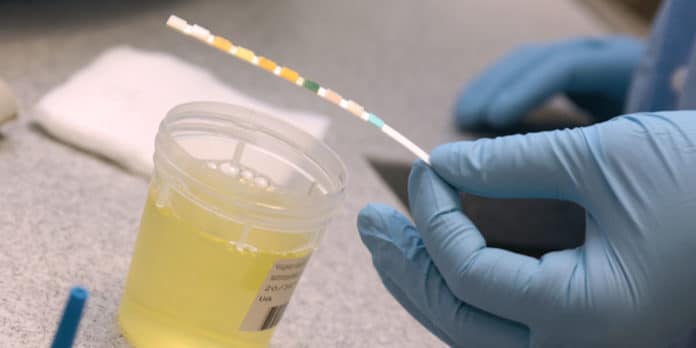Urinary tract infections (UTIs) are significant drivers of antibiotic prescribing in primary care. Inappropriate antibiotic prescribing for UTIs likely drives antibiotic resistance. In a new study by the University of Leeds, scientists aimed to describe the current investigation and antibiotic treatment to examine opportunities for improved antimicrobial stewardship.
Their study recommends that doctors urgently need a fast and accurate test for diagnosing urinary tract infections (UTIs) to reduce the overprescribing of antibiotics.
During the study, scientists observed nearly 500,000 cases of UTIs in patients in England, treated between 2011 and 2015, from records held at 390 GP practices.
Short of what, one out of five patients treated for a UTI had a research facility pee test to analyze their concern. Tests were not completed more regularly in men than ladies or to the individuals who returned for a second treatment as their indications persevered, in opposition to NHS rules.
The study also found that one in five patients who have to return to their doctors for a second round of treatment for a UTI is being prescribed the same antibiotic that was first given, which is not recommended the practice and could increase the chance of resistance developing.
The study shows that people across England have, therefore, been given repeat prescriptions that have little chance of curing their infection and may increase the risk of antibiotic resistance developing.
The study thus recommends that specialists require progressively accurate and fast testing abilities for UTI and need to consider various antibiotics if the first course of treatment comes up short.
Lead researcher Dr. Rodriguez, from the University’s Leeds Institute of Health Sciences, said: “Doctors are currently limited in their options when somebody shows signs of having a UTI, and they urgently need access to accurate, rapid diagnostics tests.
“UTIs are one of the most common reasons that antibiotics are prescribed, so the potential contribution this is causing to antibiotic resistance might be very significant.
“In addition, many patients may be making things worse by taking leftover antibiotics that they have been prescribed and using them to treat other infections, or by not finishing their course of treatment.”
When individuals are treated for infections with antibiotics, some of the friendly bacteria that usually live in the body create protection from the anti-infection agents. These microscopic organisms can pass on protection from other bacteria that may cause contaminations, later on, making those new diseases progressively hard to treat.
In their examination, analysts took a gander at about 500,000 instances of UTIs in patients in England, treated somewhere in between 2011 and 2015. Most of the patients were treated with antibiotics, and of those, 17,000 (4%) cases expected patients to come back to their doctor because their disease had not cleared up.
For those repeat visitors, a significant proportion was prescribed the same antibiotic they were treated with initially, with just 80 percent correctly given a different antibiotic capable of tackling their infection.
Worryingly, the rate at which male patients had to return for a second treatment for the same UTI increased by about 20% over the study period (from 5.2% in 2011 to 6.2% in 2015).
This increase in re-prescribing of antibiotics needs to be monitored, as it could be related to the rise in antibiotic resistance.
Scientists also found that patients who had been prescribed antibiotics more recently were more likely to need further treatment to tackle their UTI.
Patients who had been prescribed antibiotics in the past three to six months were 37% more likely to require a second treatment for their UTI, compared with those who had not been given antibiotics in the last year.
The individuals who had been recommended antibiotics in the previous one to a quarter of a year were almost twice as prone to require subsequent treatment. What’s more, those prescribed antibiotics in the last month were on multiple occasions bound to need a subsequent treatment, contrasted with the individuals who had not been given antibiotics in the previous year.
Scientists noted, “These figures all suggest that antibiotic resistance was the cause of treatment failure.”
The study is published in the journal EClinicalMedicine.
